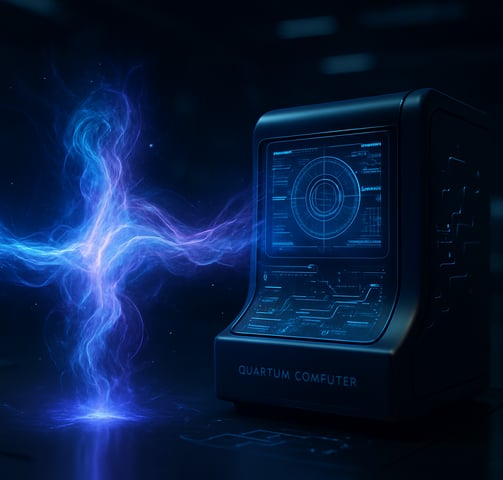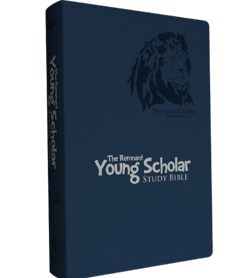Quantum Leap: Oxford's Teleportation Breakthrough and the Future of Computing
The impossible just became a reality. Discover how Oxford University's groundbreaking quantum teleportation experiment is paving the way for supercomputers beyond our wildest dreams, and what it means for science, society, and even our understanding of reality.
CURIOSTYAMAZINGSCIENCE
Bringing Blessing
7/1/202510 min read


The Fabric of Reality Just Got a Quantum Upgrade


The Scalability Solution: Building Quantum Supercomputers, One Module at a Time
Sources Consulted
Main, D., Drmota, P., Nadlinger, D. P., Ainley, E. M., Agrawal, A., Nichol, B. C., Srinivas, R., Araneda, G., & Lucas, D. M. (2025). Distributed quantum computing across an optical network link. Nature, 638(8050), 383-388. [https://www.nature.com/articles/s41586-024-08404-x](https://www.nature.com/articles/s41586-024-08404-x)
University of Oxford. (2025, February 6). First distributed quantum algorithm brings quantum supercomputers closer*. [https://www.ox.ac.uk/news/2025-02-06-first-distributed-quantum-algorithm-brings-quantum-supercomputers-closer](https://www.ox.ac.uk/news/2025-02-06-first-distributed-quantum-algorithm-brings-quantum-supercomputers-closer)
* Various news articles and scientific discussions on quantum teleportation and distributed quantum computing (as searched previously).
This article was written based on extensive research from open sources on the internet, including news portals, social media, and discussion forums. The information presented here reflects the current state of the debate. The veracity of the claims and the interpretation of the facts are the responsibility of the original sources.
The "scalability problem" has been one of the major problems in making powerful quantum computers. Think about trying to fit millions of fragile, linked qubits onto one device. The engineering problems are huge, and as the system gets bigger, it gets harder to keep the delicate quantum qualities needed for accurate calculations. Oxford's big discovery gives us a simple answer: distributed quantum computing.
Their idea is to have a network of smaller, connected quantum modules instead of one big quantum computer. There are a manageable number of trapped-ion qubits in each module, and they are connected by optical fibers. These photonic linkages are like superhighways for quantum information. They let qubits in different modules get entangled and do logical operations across the network utilizing quantum teleportation. "By connecting the modules with photonic links, our system gains valuable flexibility, allowing modules to be upgraded or swapped out without disrupting the entire architecture," said Dougal Main in a very clear way.
This modularity is a big deal. Like today's supercomputers, which are made up of groups of smaller, powerful computers that work together, this is how it's done. In theory, there is no limit to the number of processors that may be added to a quantum network. This could lead to quantum supercomputers that can solve problems that even the most powerful classical machines can't. These future quantum behemoths might tackle problems that would take today's supercomputers years to figure out in only a few hours.
Beyond the Lab: What Experts Are Saying
Most scientists are amazed and hopeful about what Oxford has done. This isn't simply another small accomplishment; it's a big stride ahead in the search for useful quantum computing. Professor David Lucas, a main researcher on the Oxford team, talked about how network-distributed quantum information processing is possible with existing technology, but he also talked about the big technical problems that still need to be solved. His realistic view shows that even though we still have a long way to go until we have large-scale quantum computers, this experiment gives us a very important roadmap.
Other specialists in the field agree with this. Many people regard this as strong proof of the distributed quantum computing model, which has been thought of for a long time as a method to get around the problems that come with developing one big quantum processor. Researchers and developers may now connect smaller, easier-to-handle quantum devices, which could speed up the process of making quantum applications that work in the real world.
Fact vs. Fiction: Dispelling the Teleportation Myths
Let's talk about the big issue that everyone is thinking about: teleportation. You might think of Captain Kirk beaming down to an alien planet or Nightcrawler disappearing in a puff of smoke when you hear the phrase "teleportation." It's important to know that what Oxford has done, while groundbreaking, is not that form of teleportation. This is "quantum teleportation," and it works on completely different ideas from the sci-fi cliche.
What it IS: As shown by Oxford, quantum teleportation is the transfer of quantum information (the state of a particle), not the particle itself. Think about how you would communicate the precise contents of a book to a buddy on the other side of the world. If you were using classical communication, you would mail the book or a copy of it. In quantum teleportation, you scan the book, delete your copy, and then your friend's blank book instantly becomes an exact copy of yours. The original book never physically travels. The information is sent, but the original object is destroyed in the process, and a new one is made at the destination. As a result, teleportation of people, as shown in fiction, is still very much a fantasy. Taking apart a person at the atomic level and putting them back together somewhere else would, by definition, constitute a type of destruction and recreation. This raises deep moral and philosophical problems regarding identity and consciousness.
It is not the ability to move things instantly. There are no wormholes, parallel dimensions, or any other strange things in it. It is a very controlled and exact technique that uses quantum states and the strange rules of quantum mechanics. So, even though the word "teleportation" could make you think of wonderful things, it's necessary to base our understanding on the facts of what has been done.


Unpacking the Quantum Magic: How Oxford Did It
Quantum physics, a strange universe where particles can be in more than one state at the same time and become inexplicably linked no matter how far apart they are, is at the heart of this great feat. Quantum entanglement is the name of this phenomenon. It is the secret ingredient that makes quantum teleportation possible. Imagine two coins that are spun separately yet always have the same result, no matter how far apart they are. If one coin lands on heads, the other coin will instantaneously land on tails, no matter how far apart they are. Albert Einstein famously called it "spooky action at a distance" because the connection is so strong.
The Oxford experiment, which was the subject of their important publication "Distributed quantum computing across an optical network link," published in Nature in February 2025, had a complicated setup. The team, led by research lead Dougal Main and main investigator Professor David Lucas from the Department of Physics, used two trapped-ion modules that they called Alice and Bob. There was one 88Sr+ ion and one 43Ca+ ion in each module. The Ca+ ion was the "circuit" qubit, which did most of the work for quantum calculations. The Sr+ ion was the important link to their optical quantum network.
This is where the real magic happens: instead of passing quantum information around, which is very fragile and easy to corrupt, the Oxford team used entanglement and classical communication. They mixed up the quantum states of distinct qubits. After that, they could instantly cause the distant, entangled partner to take on the same quantum identity as the original by measuring one of the entangled qubits. It's not about copying substance; it's about copying the state of a quantum particle, which is a blueprint of its quantum attributes.
This teleportation wasn't simply a thought experiment; it was real. The researchers were able to teletransport the spin state with 86% accuracy, which is enough to make it work as a logical gate for Grover's algorithm. If you don't know what Grover's algorithm is, it's a quantum method that can search through datasets that aren't structured much faster than conventional computers. The fact that they ran this algorithm with 71% efficiency on two different processors shows how strong their distributed technique is.
This teleportation method sends classical binary data—the results of the measurements—to the receiving end, which is different from typical ways of transferring quantum information through light waves, which can be affected by the environment. The receiver can then use this information to move its entangled particle in such a way that it completely copies the original quantum state. This approach is quite strong and can be used on a large scale because of a small but important difference.


The Road Ahead: Challenges and Opportunities
The Broader Implications: From Quantum Internet to Philosophical Debates


This invention has effects that go well beyond just making computers faster. The accomplishment of the Oxford team sets the stage for a future "quantum internet," a network where quantum processors that are far apart might talk to each other with never-before-seen security. The no-cloning theorem says that quantum information can't be copied without being changed. This means that a quantum internet would be very safe and almost impossible to eavesdrop on. This has big effects on cybersecurity, money transfers, and moving sensitive data.
This study not only has practical uses, but it also brings up interesting philosophical questions about what reality, information, and awareness really are. What does it mean for the basic building blocks of our cosmos if quantum states may be "teleported"? Does it point to a deeper connection that we are only just beginning to understand? Scientists, philosophers, and even religious leaders are trying to figure these things out.
For example, certain theological views might see similarities between quantum entanglement and ideas of God's omnipresence or interconnectivity. Mainstream science doesn't support such straightforward interpretations, but the strange things that happen in quantum physics often make people think about the essence of existence and the basic rules of the cosmos. It reminds us that science, in its never-ending quest for knowledge, can occasionally lead us to questions that go beyond what can be seen and measured.
And what about the more speculative fields, like ufology? There is no scientific evidence linking quantum teleportation to UFOs, but some ufologists and fans might make the connection, suggesting that advanced alien civilizations could be using forms of quantum technology that we don't fully understand yet for travel or communication between stars. It's important to tell the difference between scientific studies and speculative theories, even if they are interesting. The Oxford experiment shows how strict scientific methods are, not that aliens have technology.
Imagine a world where information doesn't just travel, it appears instantly from one point to another, defying the very laws of classical physics. Sounds like something straight out of a science fiction novel, right? For decades, the concept of teleportation has been confined to the realms of Star Trek and comic books, a fantastical notion that seemed forever out of reach. But what if I told you that, in a quiet lab at the University of Oxford, something akin to this impossible feat has not only been achieved but is now poised to revolutionize the very foundation of computing as we know it?
Welcome, dear reader, to the dawn of a new era. An era where the lines between science fiction and scientific fact are blurring at an astonishing pace. Just recently, a team of brilliant physicists at Oxford University unveiled a groundbreaking experiment that has sent ripples of excitement—and perhaps a touch of disbelief—throughout the scientific community and beyond. They didn't just move an object from one place to another; they successfully performed quantum teleportation between two quantum computers, distributing critical units of a quantum processor across multiple machines without any loss of performance. This isn't your average Wi-Fi upgrade; this is a quantum leap.
Even while this is a huge step forward, there are still a lot of problems to solve before we can build a fully functional, large-scale quantum computer. It is very hard to keep qubits' delicate quantum states stable since they are very sensitive to noise and interference in the environment. It is still a big engineering challenge to increase the number of interconnected modules while keeping them coherent. But the modular method used by Oxford shows a possible way to get around these problems.
This innovation also creates a lot of new opportunities. Think about how quantum simulations could speed up the process of finding new drugs, how financial models could be made more accurate than ever before, or how new materials could be made at the atomic level. There are many possible uses, and they could change everything. "Scaling up quantum computers is still a very difficult technical problem that will probably need new physics knowledge and a lot of engineering work over the next few years," said Professor David Lucas. This is a call to action for the next generation of scientists and engineers to go beyond what is feasible.
Your Ideas, Our Future
So, what do you think about this amazing jump in quantum tech? Are you excited about it, or do you have worries? Quantum mechanics is a complicated field that doesn't always make sense, but it's always amazing. It makes us question what we think we know about the universe and what we think is feasible. Please leave your comments below and let's talk about what this quantum future might look like. We are all working together to build a future, one quantum leap at a time.
You might also like:
Contact Us


Want to know more? Our "Question and Answer" area is here to answer your questions and start important conversations.
Partners Products
Qualifies for free shipping offer.
Young Scholar Study Bible NKJV (Leather-soft Pink)
U$ 59.99
Amazing Illustrated Bible for Kids
U$ 59.99
Platinum Remnant Study Bible KJV (Genuine Top-grain Leather Gray/White) King James Version
U$ 129.99
Qualifies for free shipping offer.
Qualifies for free shipping offer.
Faith
Exploring the biblical truth and knowledge.
COMMUNITY
+55 95 98117-7630
© 2024 - 2025. All rights reserved.
Hamillton Rice Street 114 - Boa Vista- RR - BR






